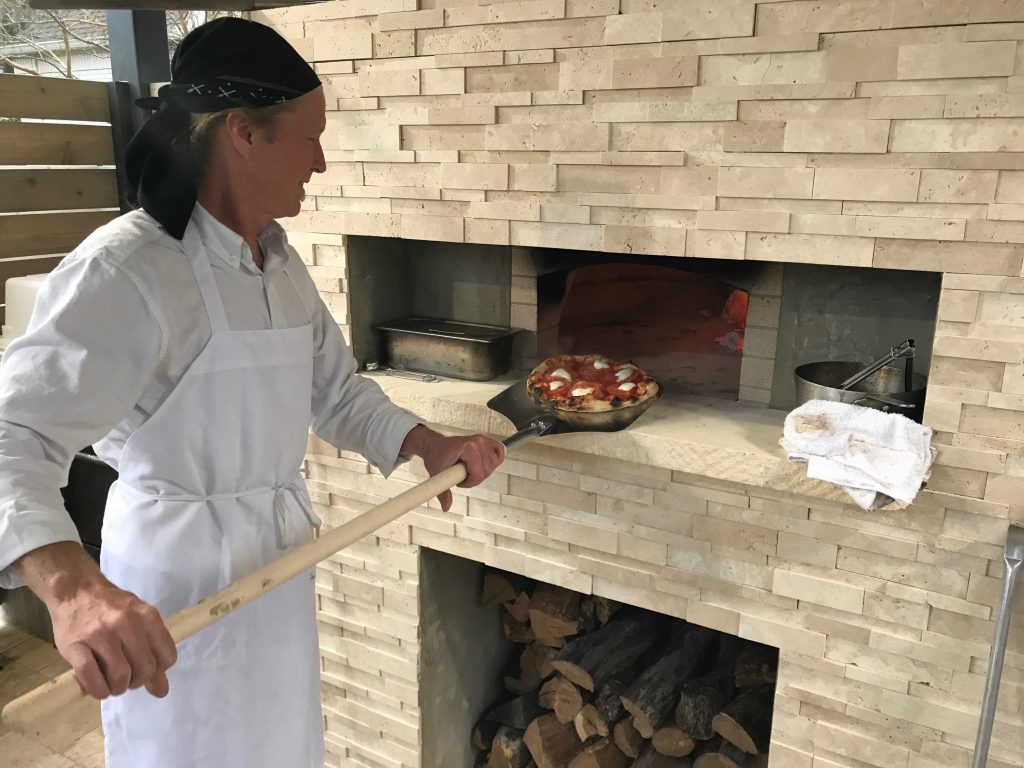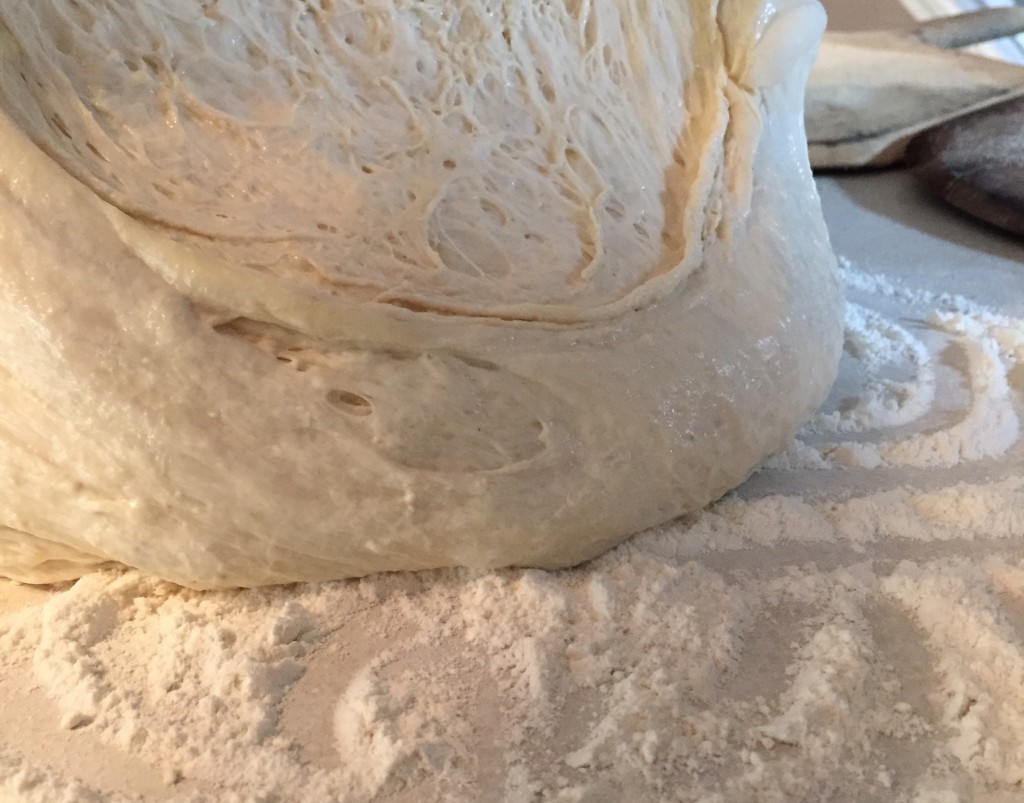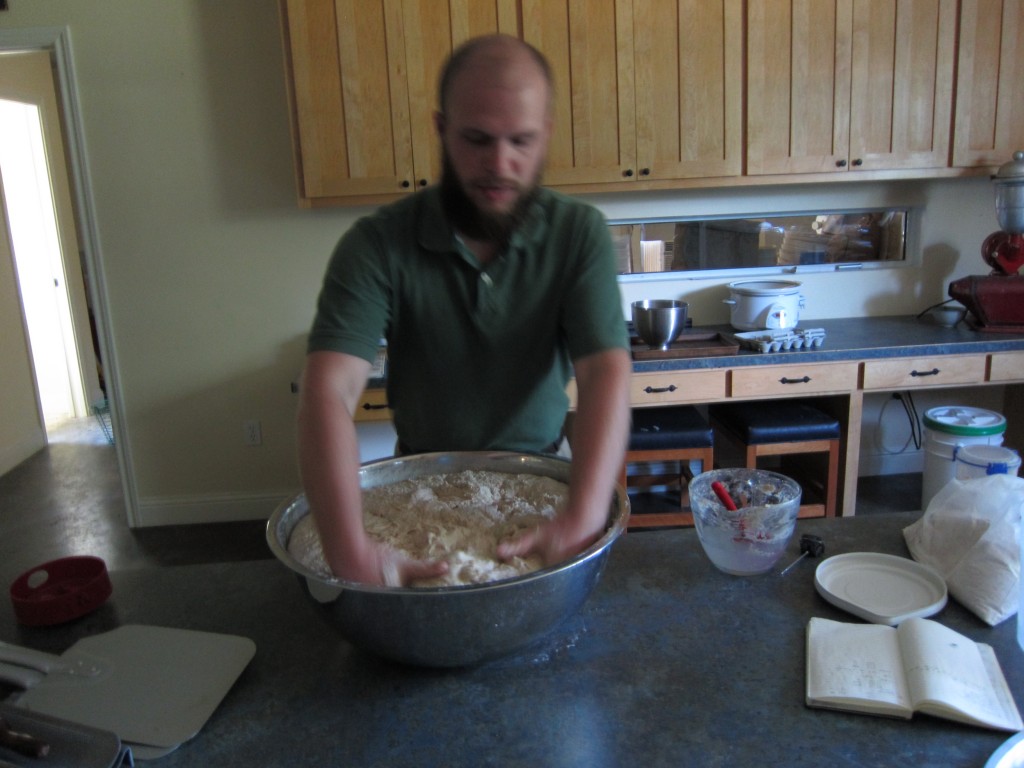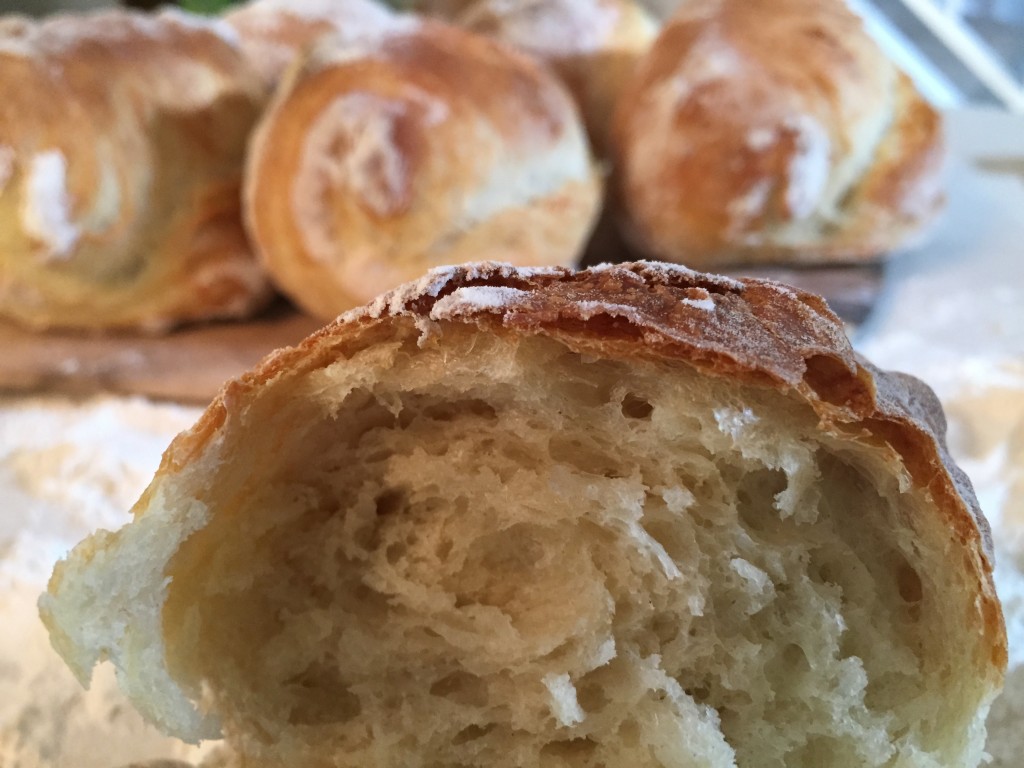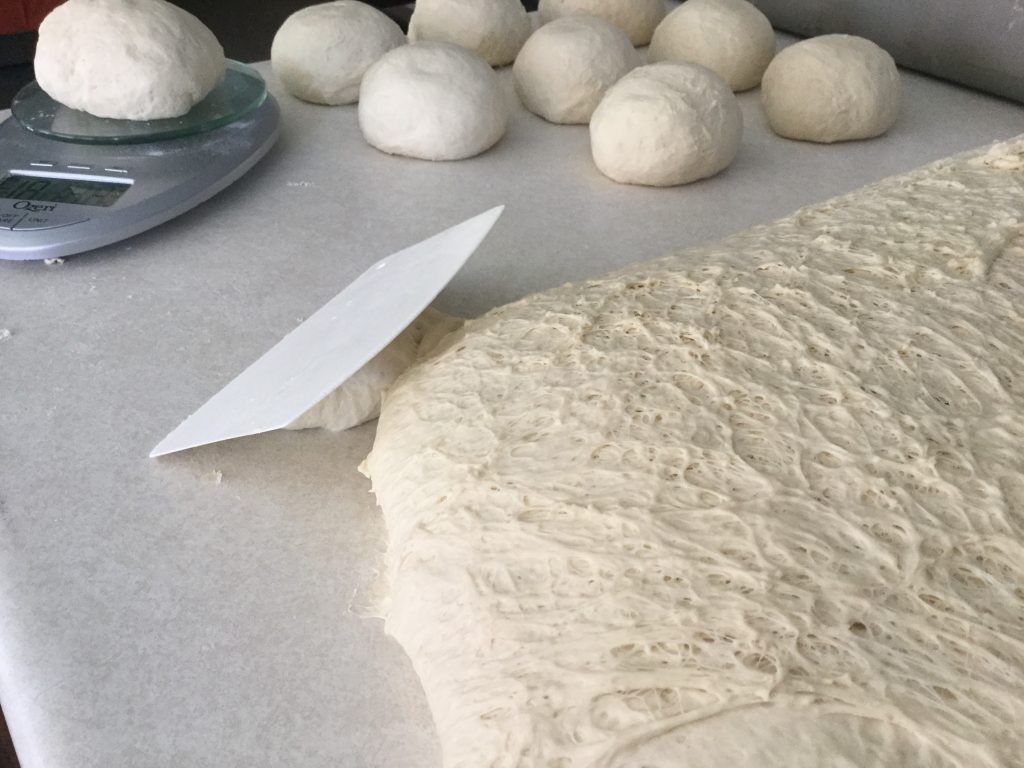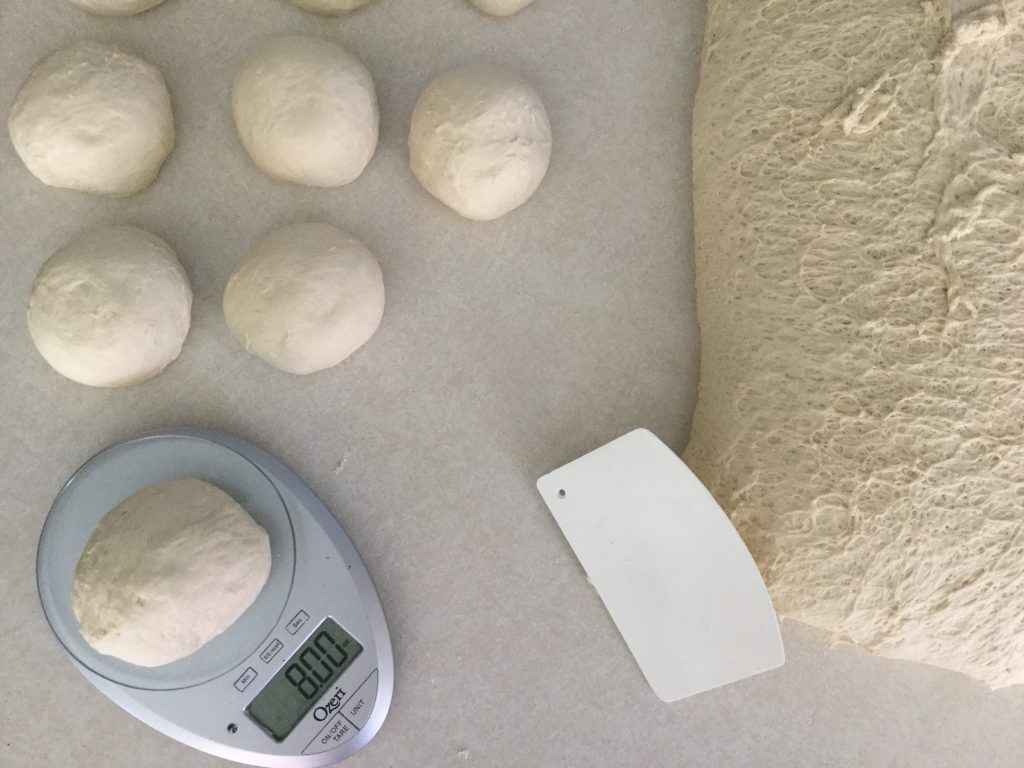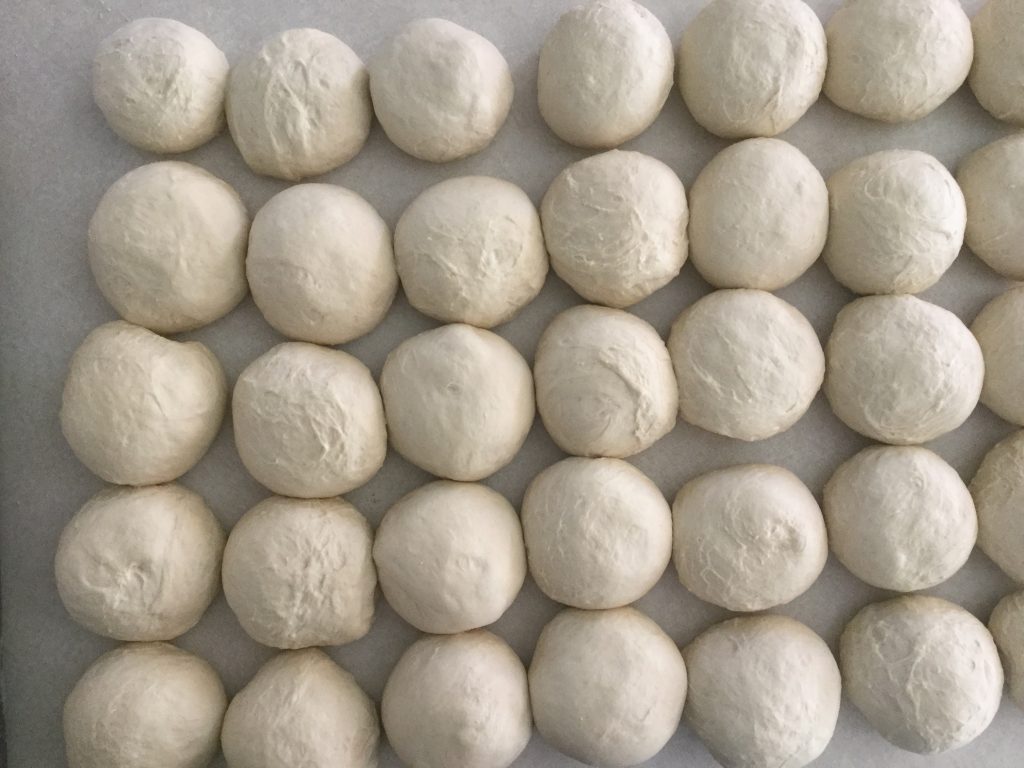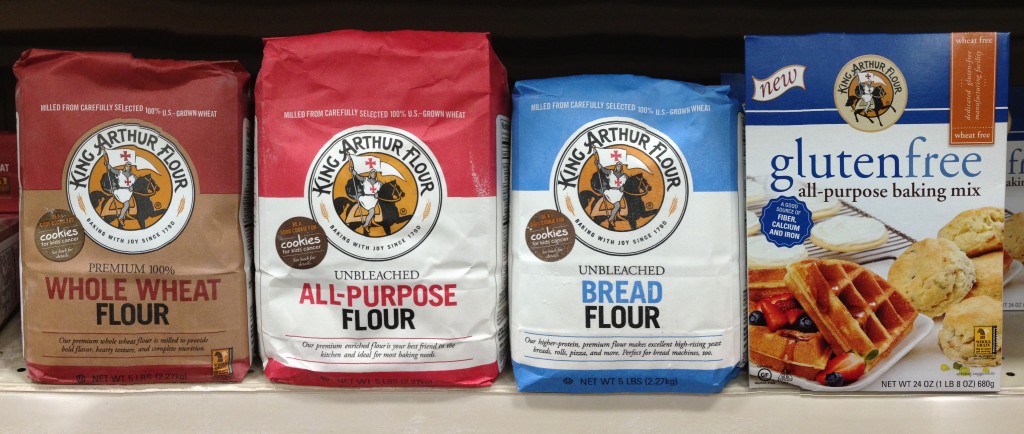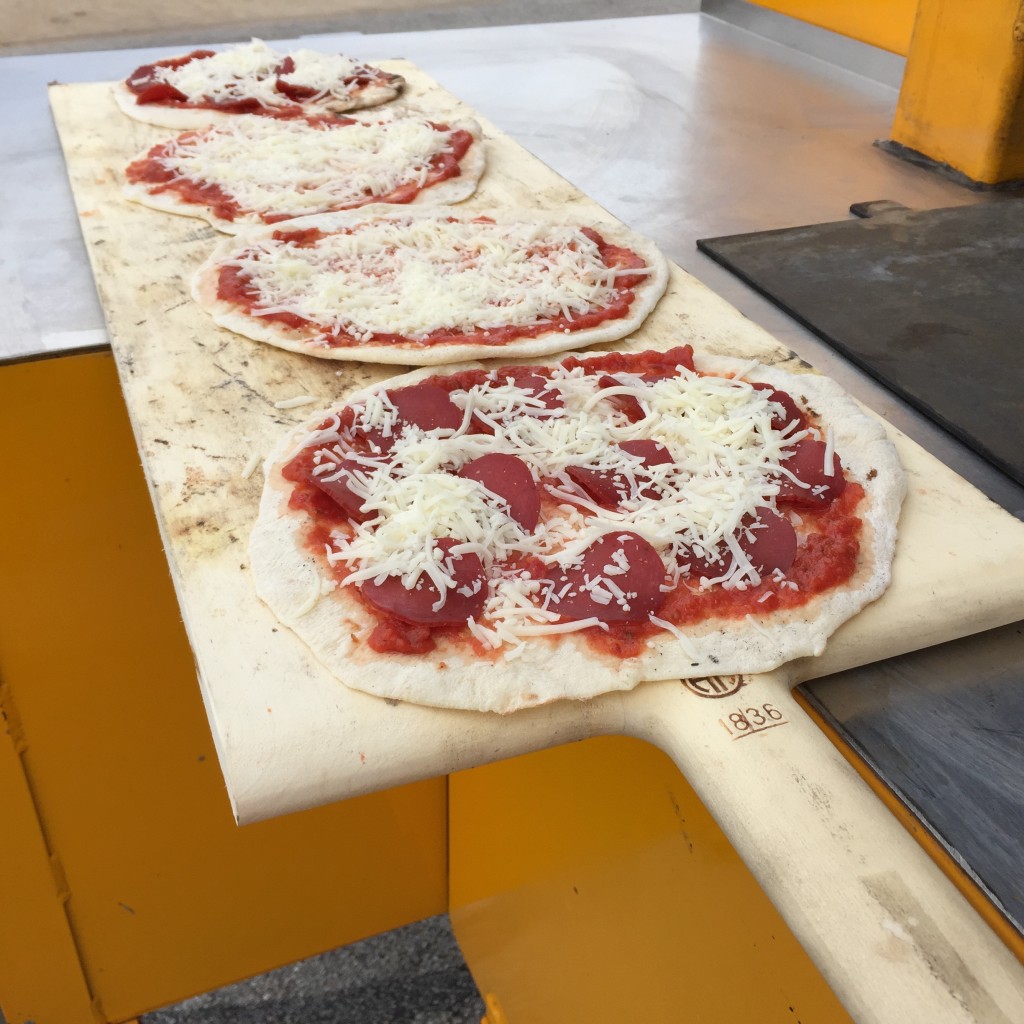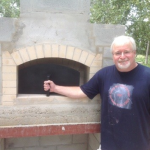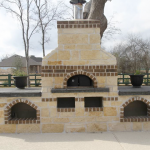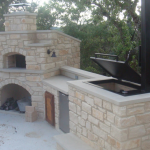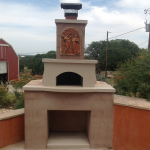Best Pizza Dough Recipe
What is your best pizza dough recipe? That’s one of the most common food questions we’re asked. It’s not a simple question to answer because the best pizza dough depends on balancing multiple variables and understanding what style of pizza you want. Are you looking for a flat cracker-like Neapolitan crust? Or thin crust with a bit of chew? On the thin side but with indulgent yeasty goodness around the edges? Are we going all the way to Chicago style deep dish? As passionate amateur bakers, we’ve been experimenting for years in pursuit of the best pizza dough.
The best pizza dough is a Balancing act
The simple quest for the best pizza dough, like the quest for great bread, involves many variables. As Peter Reinhardt says in Artisan Breads Every Day, “baking is primarily about the balancing act between time, temperature, and ingredients.” For pizza dough, the ingredients are simple: flour, water, salt, and yeast. The big variables are time and temperature. Time and temperature affect the fermentation process initiated by yeast.
Reinhardt published Artisan Breads Every Day soon after the release of a popular book called Artisan Bread in Five Minutes a Day: The Discovery That Revolutionizes Home Baking by Jeff Hertzberg. I had tried (and been a little disappointed by) the bread recipes in Hertzberg book. His five minutes a day seemed possible… but the taste and texture of the bread I baked using his method wasn’t quite up to the standard I would call artisan. In his book, Reinhardt addressed why it didn’t seem “artisan” and tweaks the techniques to raise the quality.
How does this relate to making the best pizza dough? Because artisan quality bread (or pizza) requires patience and a passionate commitment to detail. Artisan bakers earn their reputations. One bite of true artisan bread reminds us to appreciate these master bakers and respect their craft. Artisan and easy are mutually exclusive in the realm of baking. That being said, Reinhardt sums up the dream for home bakers, “we want it all: great bread, but fast and easy. Yes, it does seem like a contradiction since the premise of artisan bread is long, slow ferment.”
Humility and the Pareto principle
We decided to cede the artisan territory to the professionals. The famous Pareto principle (that 80% of the effects come from 20% of the causes) proved a wonderful guide. Most of our customers who ask for the best pizza dough recipe aren’t looking to compete with San Francisco bread makers or New York pizzerias. They want a delicious, reliable, foolproof recipe that won’t be too difficult.
Sure enough, with a couple of basics in place you can pretty much have it all: easy measurements, quick mixing, forgiving timing and dough that is easy to roll our (or toss in the air).
Tweaking hydration
Traditionally, artisan doughs are very hydrated. High water content helps achieve the creamy, gelatinous crumb that looks buttered. But thin crust pizza has less crumb than loaf bread. This seemed like a variable that might have some wiggle room, especially since working with very hydrated dough can be intimidating. It’s a new experience for many, and takes practice. The Serious Eats article Pizza Protips: How to Work with Very Wet Dough addresses some of the challenges in working with very hydrated dough, including the stretch and fold technique popularized by Reinhardt. You can see our blog with a more hydrated whole grain dough here.
Dave experimented with a slightly lower hydration, looking for the sweet spot between perfect creaminess in texture and a user-friendly dough anyone could make with their grandkids. He developed a dough that is fun to knead and shape with a texture and flavor that leave people asking for the recipe. This one change (of about 10%) got us half way to our goal of perfecting the best pizza dough.
The long, slow (cool) ferment
A long, cool ferment has nearly synonymous with artisan bread. Coaxing the best flavor out of wheat takes time. In order to maximize the fermentation time, modern bakers rely on refrigeration. I have been experimenting with long cool fermentation for 20 years now. The flavor difference is amazing, and the luxury of refrigeration gives bakers a great deal of flexibility in timing. But, there are two problems with this method. One is philosophical. Part of our ethos is old-world. We use the best modern equipment and materials to build ovens inspired by ancient cooking traditions. Should we need refrigeration for our dough? Dave wanted a recipe that didn’t rely on refrigeration… just on principle. I wanted a non-refrigerated ferment because I never have enough room in my refrigerator. When it comes time to ferment a 24 lb batch of pizza dough, I’m playing refrigerator Tetris.
The key to non-refrigerated long fermentation is to limit the yeast. Yeast is the control lever in the time-temperature balancing act. The more yeast, the faster the ferment will happen and the more likely the dough will overproof. In general, the rule for yeast is to use as little as possible to get the job done. Reinhardt explains:
“Another way of manipulating time is by using more or less yeast, or warmer or cooler fermentation temperatures. One of the main functions of yeast is to raise, or leaven, the dough through biological fermentation… Both he amount of yeast and the temperature at which the dough ferments have a huge impact on the time it takes to raise…”
Dave’s recipe has a surprisingly small amount of yeast. This allows the dough to sit out overnight in reasonable indoor-Texas temperatures without over-proofing. Being able to leave the dough on the counter overnight rather than in the refrigerator is one of the things that makes the the best pizza dough recipe. Also, the flavor produced by that long ferment is pretty unbeatable.
Do activate yeast, don’t stress over variety
Bakers and pizza makers will argue about the type of yeast to use: dry, active dry or rapid rise, brewer’s yeast, fresh yeast. Some people swear by the flavor and performance differences in each type. We’re not convinced that the type of yeast is a critical factor in making the best pizza dough. It didn’t make our cut for the 20% that mattered. However, It does help to activate the yeast, whatever variety you have on hand. We recommend activating the yeast before incorporating it. The simplest way to do that is by pre-measuring your ingredients: flour, water: salt and yeast and then whisking together a bit of the measured flour water and yeast. The proportions aren’t critical, just put the yeast in a bit of the flour and whisk in water until you get a pancake like batter. Set that aside for at least a few minutes, our up to an hour or two.
“We want it all: great bread, but fast and easy. Yes, it does seem like a contradiction since the premise of artisan bread is long, slow ferment.”
Best pizza dough – the process
The process for making the best pizza dough is simple.
- Measure the ingredients
- Activate the yeast (in a small bowl, whisk yeast with a bit of the flour and water to make a batter)
- Take a break for a while (make your pizza sauce, or just relax)
- Mix all of the remaining ingredients with the activated batter ( by hand in a large hotel pan or in your stand mixer)
- Knead the dough until it feels well mixed, smooth and a bit springy
- Cover the dough and let it rest (for at least a couple of hours, ideally over night)
- Divide the dough into 8 oz balls (set in a dough box or pan, dusted with flour so they don’t stick)
- Cover and let them proof (ideally for 1-3 hours, but we’ve cheated that in both directions)
- Pat the dough into a rough circle and roll it out (or toss it in the air)
Best pizza dough – the ingredients
We tend to make fairly large batches of this dough. Why not? It is easy to make and freezes beautifully. If you want to freeze the dough check out our blog on how to par bake the rolled-out pizza rounds to freeze for later.
Dave started this recipe with the goal of using a single bag of flour. This is the same recipe he makes for our First-fire™ parties. It is easy to scale up or down since the ingredients are just a proportion:
- 5 pounds all purpose flour
- 3 pounds (5.75 cups) water
- 2 tablespoons (30g) kosher salt
- 1 package (7g) yeast
This recipe is really about proportions. The ratio of flour to water, add some salt for flavor, and the tiniest amount of yeast possible. That’s all you need to make the best pizza dough. This dough is easy to knead, easy to roll out, forgiving in timing and absolutely delicious. The flavor has the tang of a slow ferment without a distinct sour note. It is balanced and has just enough chew. It holds its shape when rolled out and slips off the peel like a dream. Overall, it seems like 20% of the effort produces more than 80% of the goodness. This one is a keeper!


